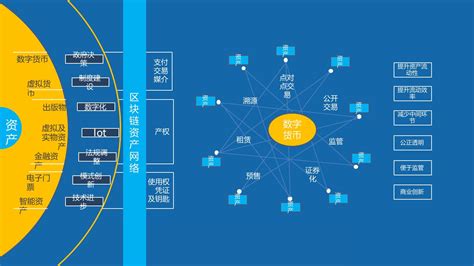Exploring Blockchain 3.0: Applications and Innovations
Blockchain technology has evolved significantly since its inception with Bitcoin in 2009. While the first generation primarily focused on digital currencies and the second on smart contracts and decentralized applications (DApps), Blockchain 3.0 represents the next stage of development, introducing advanced features and applications. In this article, we delve into the applications and innovations of Blockchain 3.0.
Interoperability is a key feature of Blockchain 3.0, addressing the challenge of compatibility between different blockchain networks. This innovation allows seamless communication and data exchange between disparate blockchain platforms. Projects like Polkadot, Cosmos, and ICON are pioneering interoperability solutions, enabling crosschain transactions and fostering collaboration among different blockchain ecosystems.
Scalability has been a significant concern for blockchain networks, especially with the growing demand for faster transaction processing. Blockchain 3.0 introduces novel scalability solutions to address this issue. Technologies such as sharding, sidechains, and layer 2 scaling solutions like Lightning Network and Raiden Network are enhancing blockchain scalability, enabling networks to handle a higher throughput of transactions without compromising on security or decentralization.
Privacy and confidentiality are crucial aspects of blockchain technology, especially in industries where sensitive data needs to be protected. Blockchain 3.0 incorporates advanced privacy features such as zeroknowledge proofs, homomorphic encryption, and ring signatures to ensure confidentiality while preserving the transparency and integrity of the blockchain. Projects like Zcash, Monero, and Enigma are leading the way in privacyenhancing technologies.
Effective governance mechanisms are essential for the longterm sustainability and growth of blockchain networks. Blockchain 3.0 introduces novel governance models, including decentralized autonomous organizations (DAOs), onchain governance, and liquid democracy. These mechanisms enable stakeholders to participate in decisionmaking processes, vote on protocol upgrades, and ensure the integrity of the network without relying on centralized authorities.
Blockchain 3.0 facilitates the tokenization of a wide range of assets, including real estate, securities, intellectual property, and commodities. Tokenization allows for fractional ownership, increased liquidity, and automated compliance, revolutionizing traditional financial markets and asset management. Platforms like Ethereum, Tezos, and Stellar support the creation and trading of tokenized assets, unlocking new opportunities for investors and businesses.

Decentralized finance, or DeFi, is a prominent application of Blockchain 3.0, aiming to democratize access to financial services and eliminate intermediaries. DeFi protocols enable peertopeer lending, decentralized exchanges, automated market makers, and synthetic assets, all powered by smart contracts on blockchain networks. Projects like Compound, Aave, and Uniswap are at the forefront of the DeFi movement, providing innovative solutions for borrowing, lending, and trading digital assets.
Blockchain 3.0 offers transformative solutions for supply chain management, enhancing transparency, traceability, and efficiency across complex supply chains. By recording every transaction and movement of goods on an immutable ledger, blockchain enables stakeholders to verify the authenticity and provenance of products, mitigate fraud and counterfeiting, and streamline logistics processes. Companies like IBM Food Trust, VeChain, and Waltonchain are leveraging blockchain technology to revolutionize supply chain management.
Identity management is another area where Blockchain 3.0 is making significant strides, offering secure and decentralized solutions for digital identity verification and authentication. Blockchainbased identity platforms empower individuals to control their personal data, reducing the risks of identity theft and data breaches. Projects like uPort, Civic, and Sovrin are developing selfsovereign identity solutions, enabling users to manage their identities and access services without relying on centralized authorities.
Blockchain 3.0 represents the next phase of blockchain technology, introducing advanced features and applications that address the limitations of previous generations. From interoperability and scalability to privacy and decentralized finance, Blockchain 3.0 is driving innovation across various industries, revolutionizing the way we transact, govern, and interact with digital assets and data. As the technology continues to evolve, it holds the potential to reshape entire industries and empower individuals in ways we have yet to imagine.
标签: 区块链的应用模式 区块链技术应用 区块链交易平台 区块链技术不包括 区块链钱包







